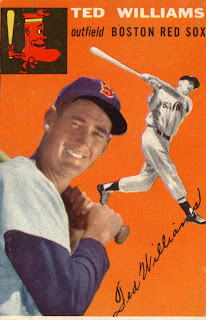

I've collected baseball cards for about 20 years or so. Well, to be more accurate I've had a baseball card collection for about 20 years, I haven't actually purchased any in years but I like to keep the ones I do have.
My collection really started in earnest in 1989 after our family moved from Germany to Kingston Ontario. We had kept a lot of our stuff in storage while we lived in Germany so when we got back there were a lot of boxes full of our old stuff to look through.
In one of those boxes I found a dusty paper bag that was filled with probably about 150 or so baseball and hockey cards that had been my dad's when he was a kid in the early 50s.
Most kids from his generation cursed their mothers for throwing out childhood baseball card collections that would have been worth small fortunes when they grew up, but my Grandma didn't fall into that trap. Unfortunately however my discovery of this horde didn't make us wealthy either.
The fault, believe it or not, lay with the designers of a wallet my dad had when he was a kid. They chose to make the wallet approximately 3mm narrower than a baseball card. This forced my dad, who wanted to carry his favorite cards around in his wallet, to take out a pair of scissors and trim the margins off his cards.
This 1954 Topps Ted Williams card, for example, is something like a $700 card. However, it is supposed to have a white border around the orange background. You may notice that this is missing. Ditto with the 1953 Roy Campanella, which seems to have had the added indignity of being folded into quarters and stuffed into a pocket at some point.
For those of you who don't know much about baseball card collecting, a $700 baseball card which has had its margins cut off by a kid with a pair of scissors loses approximately $700 of its value.
.231 career hitter Bobby Morgan's card survived intact of course.
Anyway, I quite like these cards even without the margins and wouldn't sell them for a fortune even if I could.

